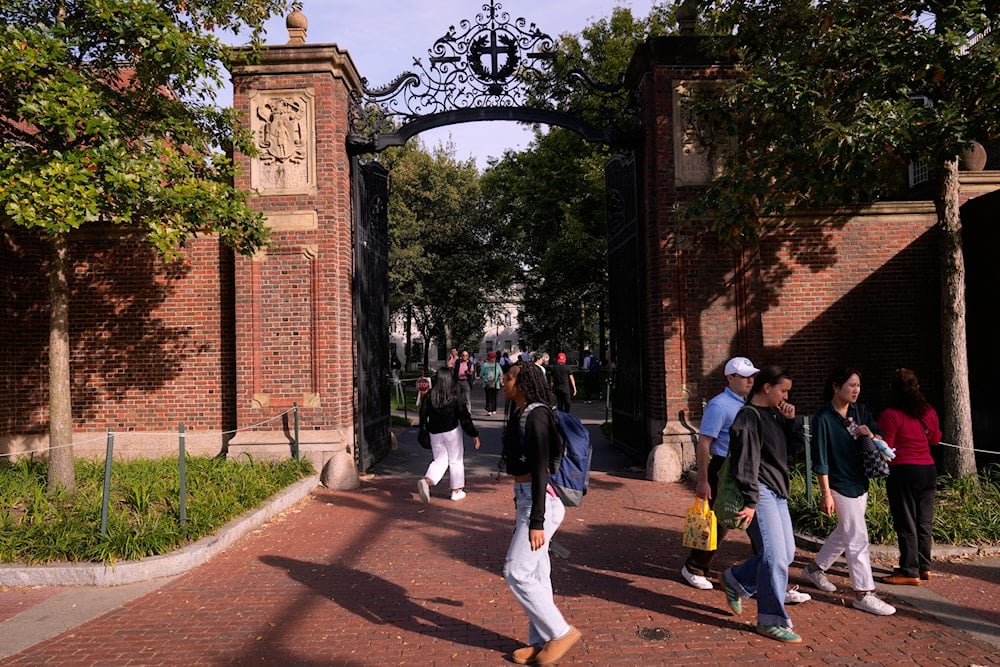New international student enrollments in US plummeted: Survey
New data shows a 17% drop in international student enrollment at US colleges this fall, as Trump administration immigration policies and visa restrictions raise alarm among universities and prospective students.
-

The gates of Harvard Yard at Harvard University, Tuesday, September 30, 2025, in Cambridge, Massachusetts. (AP Photo/Charles Krupa)
The number of international students enrolling for the first time at US colleges and universities dropped by 17% this fall, marking one of the steepest declines in recent years. The drop, reported on Monday by the Institute of International Education, reflects growing anxiety over US immigration policies and student visa restrictions under the Trump administration.
While the total number of international students on US campuses, including those who enrolled in previous years, remained relatively stable, declining only about 1%, the sharp decrease in new enrollments signals a potentially deeper contraction ahead.
The data, compiled from roughly 825 institutions, shows that 57% reported declines in first-time international student numbers. Many attributed the drop to uncertainty surrounding student visas and restrictions introduced over recent months.
The 17% decrease follows a 7% drop in new international enrollments in fall 2024. Analysts warn that as current students graduate or return home, overall international enrollment in the US could fall more sharply over the next few years.
Trump administration’s mixed messaging on student visas
The Trump administration’s evolving stance on international students has generated confusion among universities and foreign applicants alike. Several institutions reported delayed visa processing, canceled interviews, and increased scrutiny from immigration authorities. In one instance earlier this year, the administration attempted to block Harvard University from enrolling any new international students.
A federal judge later halted the move.
Although President Donald Trump has floated proposals to limit international enrollment, including a potential 15% cap, he has also acknowledged the economic importance of foreign students. “It’s not that I want them, but I view it as a business,” Trump said in a recent interview, warning that deep cuts in student numbers could “destroy our entire university and college system.”
Graduate-level programs, which host the majority of international students in the US, were particularly affected. The report found a 12% drop in new graduate student enrollment this fall, as many institutions scaled back admissions amid immigration uncertainty. In contrast, undergraduate enrollment showed signs of recovery from earlier pandemic-era declines, according to the survey.
Despite the policy headwinds, the US still hosted around 1.2 million international students this year, approximately 6% of all postsecondary enrollments. India and China continue to account for the largest share, sending nearly 629,000 students combined.
Financial strain for US universities
International students remain a key revenue stream for many US institutions, often paying higher tuition rates than domestic students. The drop in new enrollments has heightened financial concerns among university administrators, especially at schools that depend on international student income to support research and academic programs.
Adding to those concerns is a recently announced $100,000 fee for new H-1B visas, which universities rely on to recruit international staff and researchers. In recent court filings, higher education officials warned that the added cost could disrupt hiring and undermine academic operations.
The new data, backed by federal funding, offers a snapshot of a sector facing growing uncertainty. While some feared a more dramatic collapse in international enrollment, with earlier projections estimating a 40% drop.

 3 Min Read
3 Min Read










